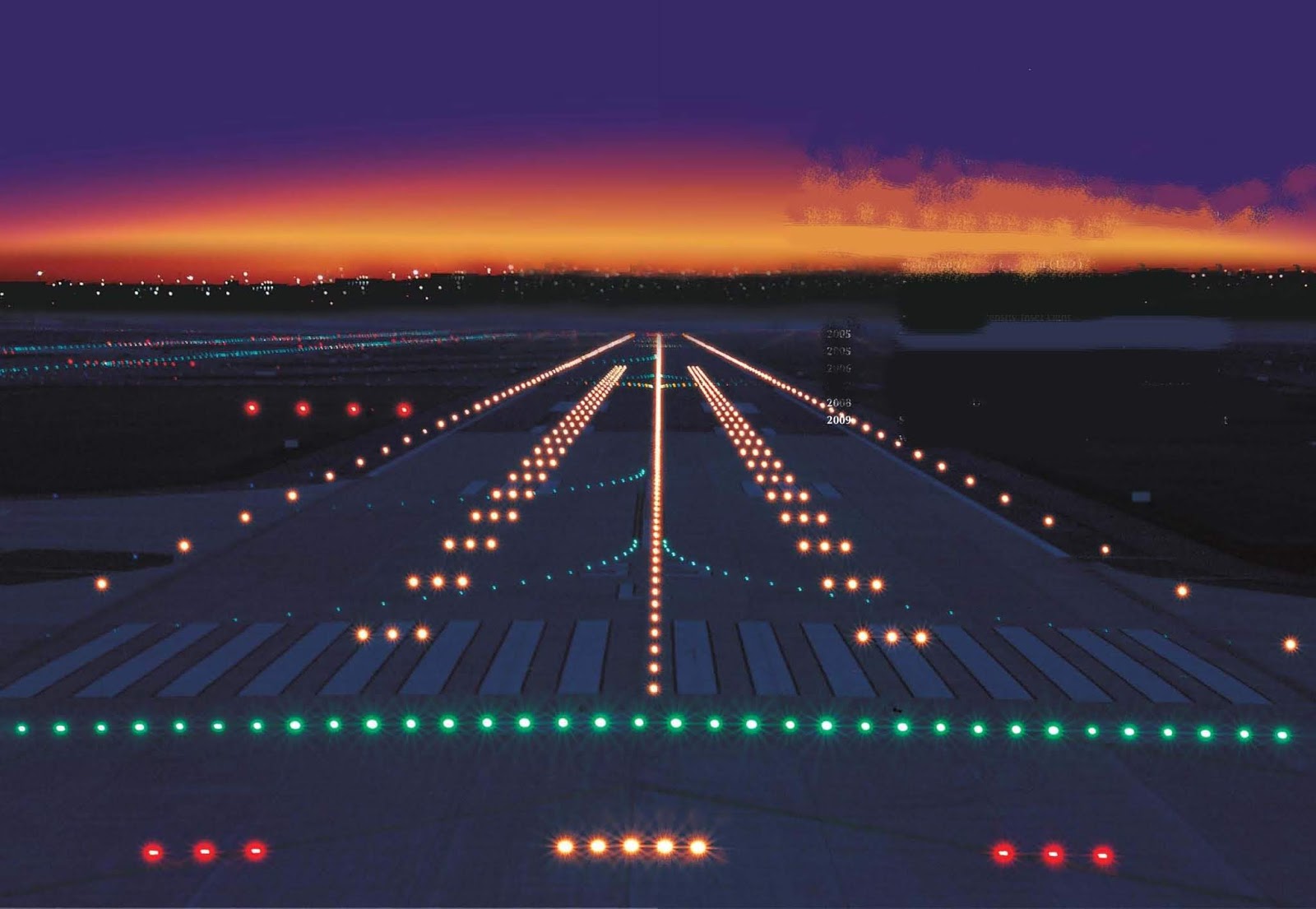
Runway lighting systems enable pilots to land safely at night or in bad weather conditions. When viewed from the aircraft, the lights on the runway serve as a guide for the pilot who will land. Here are some of the lighting systems on the tracks:
- Runway End Identifier Lights (REIL): These are the lights used to identify the end of the runway.
- Runway Edge Lights: These are the lights that determine the boundaries of the runway in poor visibility conditions and night operations. They are divided into three categories according to their density: High (HIRL), Medium (MIRL) and Low (LIRL) density.
- Runway Center Line Lighting (RCLS): Lights placed in the center of the runway that help align the aircraft with the runway.
- Runway Contact Zone Lighting (TDZL): These are the lights that illuminate the first contact point of the aircraft during landing.
- Taxiway Central Lighting: It is a lighting system that makes taxiways clear and provides guidance to pilots.
- Approach Lighting System (ALS): These are the lights that give the pilot visual information about the route to be taken when approaching the runway.
Especially the PAPI (Precision Approach Path Indicator) system is unique for pilots to make safe landings. The pilot can control the safe glide angle with PAPI lights; The combination of white and red among the four lights indicates the angle of the aircraft. This system, which is accepted worldwide according to ICAO standards, is known as a global approach indicator.
Runway edge lights outline the contours of the runway and help the pilot clearly see the boundaries of the runway. The intensity of the lights is usually adjusted according to weather conditions and visibility. Thus, the intensity of the lights can be regulated according to the pilot's needs, whether manually (via PCL or ARCAL) or automatically (via PLC control).
Additionally, approach lighting systems consist of a series and combination of lights that help guide the aircraft as it approaches the runway and enable the pilot to maintain visual alignment. Although there are different ICAO configurations, national civil aviation authorities may also set their own standards.
Finally, taxiway lighting; It aims to direct pilots between different sections of the airport. A range of lighting such as edge lights, center lights, border lights and stop bar lights make day and night operations safer and more efficient.
Airport lighting systems are vital elements that enable pilots to maneuver safely both at night and in difficult weather conditions. And all these systems are constantly checked and maintained in line with international and local standards, ensuring compliance with the highest safety standards.
